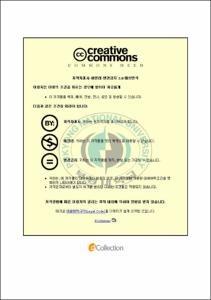Seismic indicators of gas hydrates and associated gas and gas fluids and estimation of heat flow in the northeastern Ulleung Basin, East Sea (Sea of Japan)
- Alternative Title
- 동해 울릉분지 북동부의 가스수화물, 가스, 가스유체의 탄성파 지시자 및 열류량 평가
- Abstract
- 동해 울릉분지에서 취득한 다중채널 탄성파 탐사자료로부터 해저면 가장 반사면 (bottom-simulating reflector, BSR), 탄성파 수직 교란, BSR 위의 탄성파 진폭 감소, BSR 아래의 탄성파 진폭 증가와 같은 다양한 가스수화물 및 가스, 가스유체의 증거들을 확인하였다. BSR이 가장 광범위하게 분포하는 증거로서 탄성파 탐사가 이루어진 지역의 80%에서 확인된다. 쇄설류 퇴적층에서 확인되는 BSR은 진폭이 낮고 연속성이 좋지 않은 반면에 저탁류 퇴적층과 반해양성 퇴적층에서 확인 되는 BSR은 진폭이 비교적 높고 연속성이 좋다. 이는 가스수화물과 가스의 농도가 퇴적물의 타입에 영향을 받음을 시사한다. BSR의 해저면 이하 깊이는 160 m이상에서 약 185 m로서 과거의 연구에서 알려진 것 보다 얕다. BSR 아래의 탄성파 진폭 증가와 위의 탄성파 진폭감소는 국지적으로만 관찰된다. 탄성파 수직 교란은 특히 연구지역의 동쪽에서 많이 관찰되는데 일부는 해저면에서 가스 및 가스유체의 분출을 지시하는 증거를 보이기도 한다. BSR의 해저면 이하 깊이로부터 유추한 지열은 80 ~ 110 W/m2에 이르는데 이 값은 울릉분지 지각의 연령이 21 ~ 40 Ma 정도임을 시사한다.
Analysis of 2-D high-resolution multi-channel seismic reflection data from the northeastern part of the Ulleung Basin, East Sea (Sea of Japan), reveals various seismic indicators of gas hydrate and associated gas, such as the bottom simulating reflector (BSR), seismic chimneys, amplitude blanking above the BSR, and enhanced reflection and frequency drop below the BSR. The southeastern part of the study area near the base-of-slope region is dominated by debris flow deposits that pass into turbidite-hemipelagic sediments in the west and northwest. The BSR is the most dominant, covering about 80% of the surveyed area. The BSR in debris flow deposits is discontinuous and weak whereas it forms a more continuous and high-amplitude event in turbidite-hemipelagic sediments. The subsurface depths of the BSR range from over 160 m to about 185 m, much shallower than previously reported. Enhanced reflection below the BSR and amplitude blanking above the BSR are seen only locally. Narrow (< 30 m) seismic chimneys are common especially in the eastern part of the area. However, wider (> 30 m) seismic chimneys or seismic blank zones do not exhibit evidence of associated high permeability features. Seismic chimneys also rarely have noticeable seafloor expressions such as pockmarks or mounds, suggesting that they are buried vents and/or due to shallow gas accumulations. Heat flow values estimated from the subsurface depths of the BSR range from about 80 to over 110 W/m2, which give an age for the Ulleung Basin of between 21 to 40 Ma from age-versus-heat flow comparisons.
- Issued Date
- 2007
- Awarded Date
- 2007. 8
- Type
- Dissertation
- Keyword
- Ulleung Basin gas hydrate BSR 동해 울릉분지 가스수화물
- Publisher
- 부경대학교 대학원
- Affiliation
- 부경대학교 대학원
- Department
- 대학원 환경탐사공학과
- Advisor
- 이광훈
- Table Of Contents
- INTRODUCTION = 1
TECTONIC AND GEOLOGIC SETTING = 3
DATA SETS = 7
RESULTS: SEISMIC INDICATORS OF GAS HYDRATE AND ASSOCIATE GAS AND GAS FLUIDS = 9
The Bottom Simulating Reflector (BSR) = 9
The BSR in Debris flow Deposits = 15
The BSR in Turbidite/hemipelagic Sediments = 18
Enhanced Reflections = 20
Amplitude Blanking = 22
Seismic Chimneys and Vertical Vents = 24
Gas Seepages = 28
DISCUSSION = 30
Seismic indicators of gas Hydrate and associated gas and gas = 30
Heat flow estimated from subsurface depths of the BSR = 37
CONCLUSIONS = 40
Acknowledgements = 44
REFERENCES = 45
- Degree
- Master
- Files in This Item:
-
-
Download
 Seismic indicators of gas hydrates and associated gas and gas fluids and estimation of heat flow in .pdf
기타 데이터 / 6.16 MB / Adobe PDF
Seismic indicators of gas hydrates and associated gas and gas fluids and estimation of heat flow in .pdf
기타 데이터 / 6.16 MB / Adobe PDF
-
Items in Repository are protected by copyright, with all rights reserved, unless otherwise indicated.